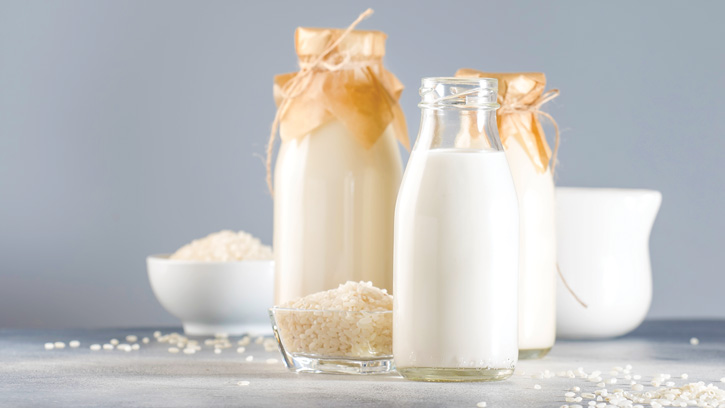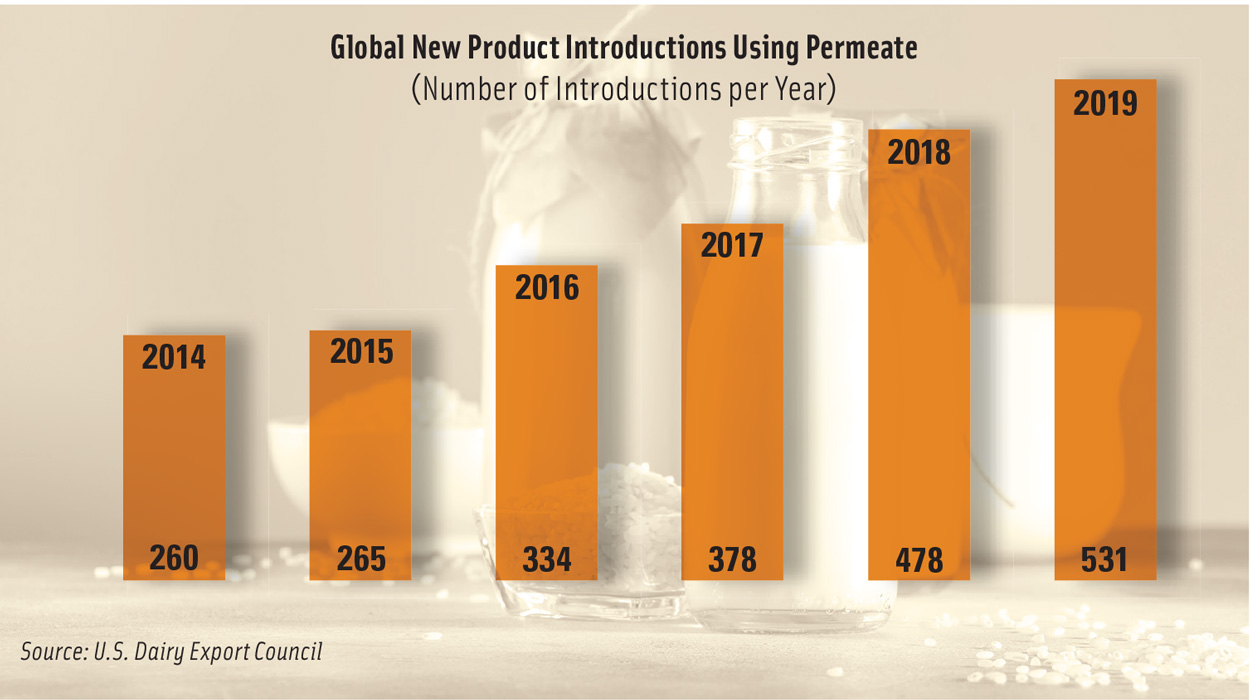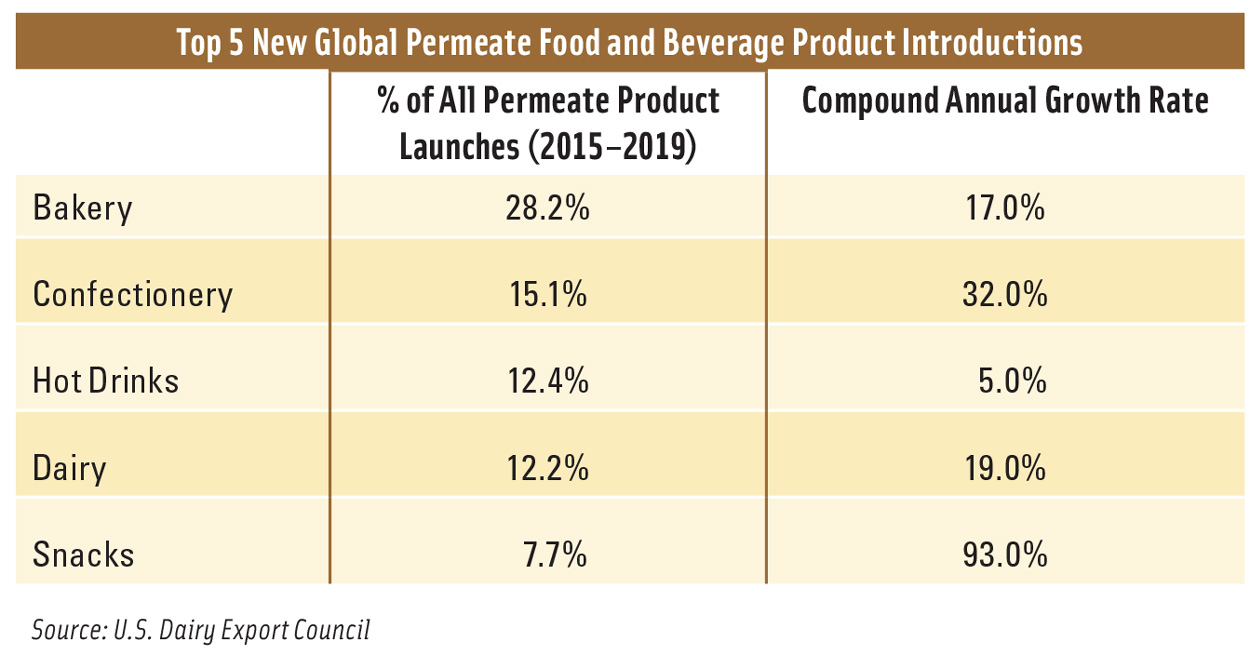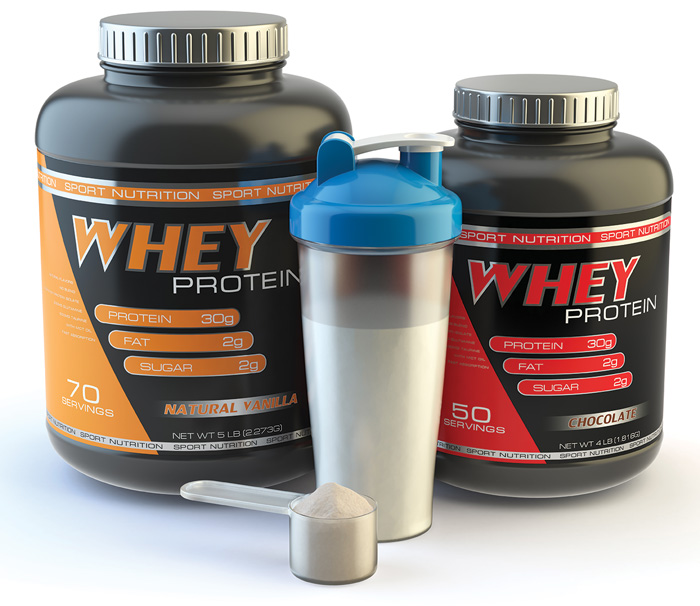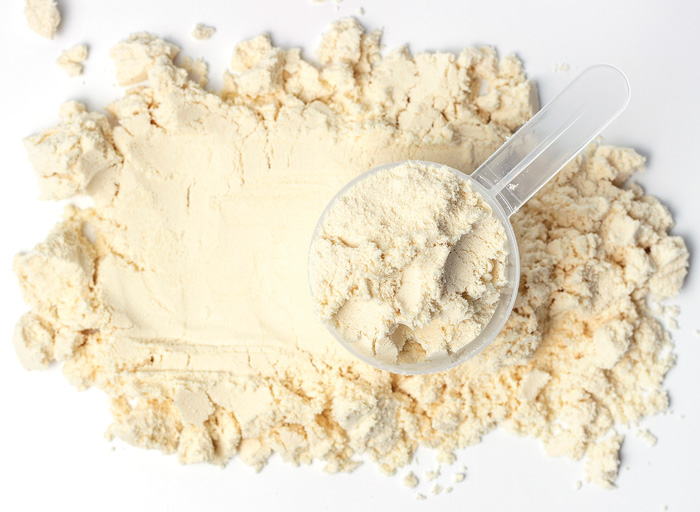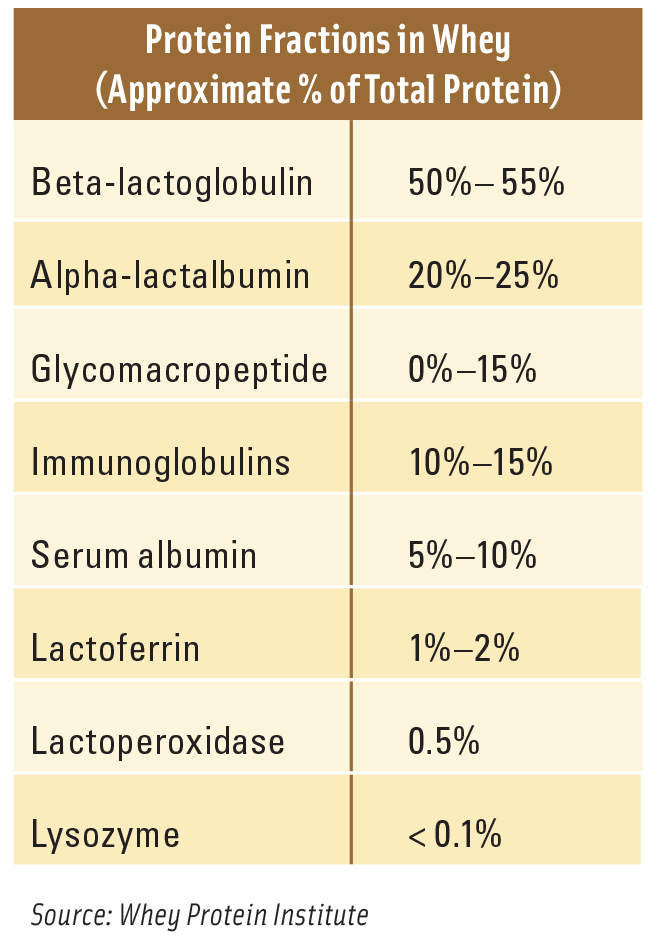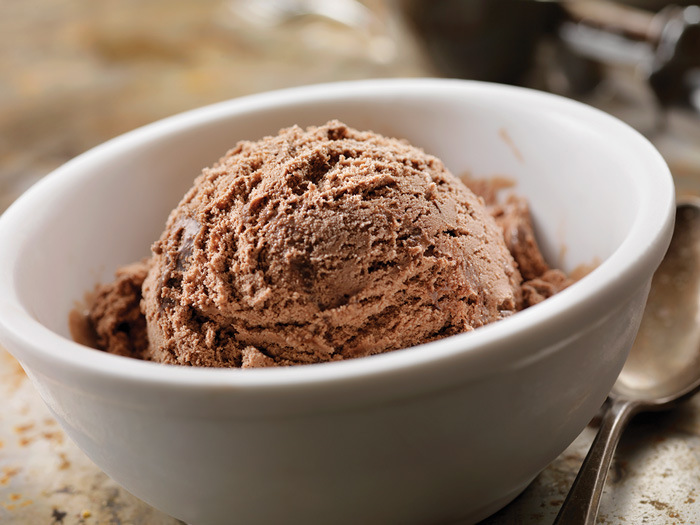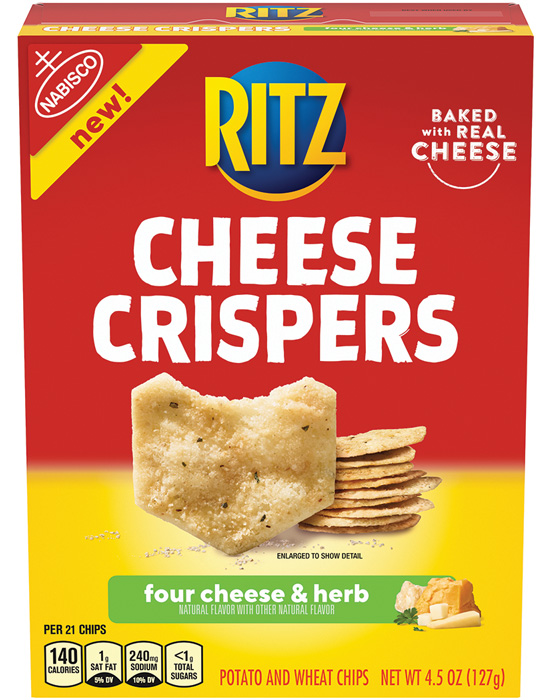Dairy-Derived Proteins Expand the Playing Field
INGREDIENTS
As the public continues to focus on staying healthy and boosting immunity during the COVID-19 pandemic, technology advances are creating new opportunities for dairy protein ingredients that meet the evolving needs of both consumers and food processors.
Introductions of new products with dairy proteins were headed up long before the pandemic hit, with a 24% gain in 2019 launches compared with 2015, according to data from Innova Market Insights. And increases in dairy protein ingredient usage are likely to continue for a variety of reasons, say industry experts.
“Milk is a good/excellent source of nine essential nutrients, including three—vitamin A, vitamin D, and high-quality protein—that are essential for a healthy immune function,” says Rohit Kapoor, vice president-product management at Dairy Management Inc. (DMI). “That means a great opportunity for dairy-based ingredients such as milk and whey proteins. [These] proteins already are the cornerstone of various products designed for nutrition, health, and wellness, whether it is a beverage, a bar, or other high-protein foods. [Dairy proteins] now have the opportunity to play a larger role in various products targeted for consumers who are looking for overall wellness and desire nutrient-rich foods.”
Beyond their healthy halo, dairy proteins offer a taste advantage too, says Ron Hayes, marketing manager at Idaho Milk Products. “Health professionals are talking a lot about how vital protein is to fight viral and bacterial infections,” he says. “With a viral pandemic going on, everybody’s looking for anything they can get that can help them, especially if it tastes good. And dairy proteins taste good.
“The pandemic put the spotlight on dairy proteins, and that spotlight will continue for at least some time into the future,” he adds.
Plant-Based Inroads
Although the recent explosion of plant-based protein products and nondairy beverages is currently trending with consumers, dairy-derived proteins are well-equipped to meet the challenge head on, says Mads Dyrvig, head of sales development, business unit health and performance, at Arla Foods Ingredients.
“The interest in plant-based proteins is welcome because it has helped drive growth in the protein space generally,” says Dyrvig. “What we’d like to see now is a greater focus on the quality profiles of different sources of protein, both in terms of nutritional benefits and factors such as taste and texture.”
In addition to being nutritionally superior to plant-based proteins in many aspects, such as providing all nine essential amino acids, dairy proteins offer important functionality benefits. “Our group at DMI led recent work at our farmer-funded National Dairy Foods Research Centers on taste and functionality of dairy protein ingredients when compared to various plant proteins,” Kapoor says. “We found that dairy protein ingredients provide a breadth of functionality while ensuring a simple ingredient list and neutral flavor profile that consumers desire.”
Growth in the plant-based market also opens up a new realm of hybrid plant/dairy protein product formulations for consumers who aren’t strict vegetarians or vegans, says Melissa Riddell, technical solutions and business development manager at Batory Foods, a national ingredients distributor. In fact, 35% of consumers say they would prefer a mix of plant and animal products, compared with 22% who prefer 100% plant-based products, according to a recent Innova Market Insights consumer survey.
“With the difference in protein quality, proteins from milk can complement plant proteins well and compensate for their lower essential amino acid composition, taking a ‘best of both worlds’ approach for consumers who want more plant-based products with the higher quality that proteins from milk provide,” says Lindsey Ormond, director of nutrition and research at Milk Specialties Global.
It can be a win/win for both dairy and plant-based proteins, agrees Vikki Nicholson-West, senior vice president, ingredient marketing, at the U.S. Dairy Export Council. “Because dairy proteins stand out for offering exceptional functional benefits in finished foods and beverages, including solubility, heat stability, gelling, foaming, and emulsification, more manufacturers have turned to blending dairy and plant proteins to allow for improved nutrition and ease of formulation while satisfying modern consumers,” she says.
Breaking Down Dairy
Technological gains in the capability to separate milk and its components into increasingly specific fractions is helping to broaden the appeal of these dairy-derived proteins and other ingredients beyond products designed for sports and clinical nutrition.
“Dairy protein ingredients such as whey protein concentrates and isolates (WPC and WPI), milk protein concentrates and isolates (MPC and MPI), and various lactose-rich dairy ingredients such as milk and whey permeate are among the most multifunctional ingredients in the food industry,” says DMI’s Kapoor. “Today, the dairy industry can manufacture these ingredients at scale with customized compositions to meet many of the nutritional and functional requirements in food products to satisfy the market trends.”
“Dairy processors continue to innovate to develop dairy proteins with unique functionality and versatile applications,” agrees Nicholson-West. “Advances in milk fractionation are seeing such dairy proteins as milk-derived whey proteins and micellar casein concentrate (MCC) begin to grow not only in production but also utilization in beverages, snacks, and infant formula.”
Cost can be a factor in the development of some new dairy derivative ingredients, though, says Kimberlee Burlington, dairy ingredient applications coordinator at the Center for Dairy Research, University of Wisconsin–Madison. “In some cases the cost of some of these fractions is pretty high, so we might not see them in everyday consumer products because of that,” she says. “But as the science becomes more established [that may change]. Some of the companies that make whey ingredients have taken time to do clinical studies on their own. But it’s very expensive.”
Whey Protein Offerings Expand
Around 95% of the world’s whey stream is a byproduct of cheese production, according to Follow Me This Whey, an August 2020 report from Rabobank, a global leader in food and agriculture financing. The protein in milk is made up of about 20% whey and 80% casein, and cheese is primarily composed of casein and milkfat. Leftover liquid whey from cheese making can be dried or processed into whey protein concentrate and isolate. Whey protein can also be enzymatically hydrolyzed into smaller functional peptides for increased bioavailability and absorption.
Sports nutrition is the top product category for whey protein ingredient usage, but more than half of the 6,452 global whey protein product introductions in 2017 were in other categories, including yogurt, oatmeal, and breakfast foods, savory/indulgent snacks, and pizza crust, reports the U.S. Dairy Export Council. The number of new whey protein product launches worldwide in 2017 was up 6.6% from 2016 and more than double the number of introductions in 2012.
“Since whey proteins offer stability in both acid and neutral pH applications, they give many options for products in all types of thermal processes,” says Grace Harris, director, applications and business development at Hilmar Ingredients, which supplies whey protein and lactose made from sweet whey. “Hydrolysates are used for both functional benefits (heat stability) as well as nutritional benefits (quicker absorption). Clarity of whey proteins is increasingly popular in beverage applications. Whey protein is one of a very few protein options to provide this benefit.”
Arla Foods Ingredients’ new Lacprodan ISO.WaterShake, for example, is a whey protein isolate for ready-to-mix powder products that can help deliver pleasant taste and appearance, says Dyrvig. “It is revolutionary because it has a clean water-like taste and is crystal clear when dissolved in water,” he says. “It therefore allows differentiation in the sports powder market, where taste is increasingly important, but which is dominated by products that are milky in both appearance and taste profile.”
Arla Foods Ingredients also has launched Lacprodan HYDRO.Rebuild, a 100% hydrolyzed whey protein that has demonstrated significant improvements to muscle mass, strength, and mobility for resistance-trained older women in independent clinical trials, says Dyrvig.
“In light of population aging, one of the most promising ingredients is hydrolyzed whey protein,” he says. “Whey protein has a unique ability to address and slow down muscle weakening, helping [older] people stay active for longer.”
Functionalized WPIs, such as acid-stable WPI, are an area of emerging growth, says Kapoor. “Acid-stable WPI is produced through a novel process to render WPI that is suitable for high-acid, high-protein clear beverages such as protein waters and fruit-based drinks,” he says.
The Center for Dairy Research at the University of Wisconsin–Madison featured a pre-acidified WPI in a calamansi juice gelatin snack at the 2019 IFT Food Expo, says Burlington. “It worked really well and was a super-easy formula,” she says. “It was very refreshing, and you don’t see gelatin snacks that have high-quality protein like this.”
Way Beyond Whey
Some whey constituents are also generating buzz for their potential nutritional benefits as consumers become more sophisticated about functional ingredients for boosting immunity and improving their overall health.
“Given the current focus on immunity, whey protein products such as lactoferrin and immunoglobulins look very promising,” says Milk Specialties Global’s Ormond. “These products contain many bioactive peptides that have been shown to have immune-modulating properties, including protection against pathogens and favorable modulation of gut bacteria (since the gut is a key part of our body’s defense system).”
Milk Specialties Global has introduced NutriPRO, a range of nutritionally enhanced whey protein ingredients that provide superior health benefits, says Ormond. “These ingredients include lactoferrin-rich whey protein concentrate and isolate, alpha-lactalbumin-rich whey protein isolate, and IgG [immunoglobulin G]-enriched whey protein concentrate.
“Alpha-lactalbumin is a whey protein fraction naturally rich in [essential amino acid] tryptophan, which can influence serotonin production in the brain,” she adds. “Serotonin, also known as the ‘feel good’ hormone, influences mood and plays a key part in the sleep-wake cycle.”
Milk-Derived Proteins Make a Splash
Milk-derived proteins are beginning to come into their own, offering some unique formulation and flavor benefits compared with whey-derived proteins. Milk-derived proteins like MPC and MPI also produce a creamy mouthfeel and a neutral to mild flavor, with excellent solubility and emulsifying capabilities.
“We’re seeing an upswing in the use of milk proteins. There are ways to use them in almost any type of food or beverage product except for clear beverages, because [milk proteins] are white,” says Hayes of Idaho Milk Products, which opened its new Milk Innovation Center last year focusing on ready-to-drink (RTD) beverages, yogurt and fermented dairy, fresh dairy, protein bars, ready-to-mix powders, ice cream, bakery, and cereal.
“An emerging ingredient that we are excited about is micellar casein, which is produced from milk through a simple microfiltration process to fractionate and concentrate casein proteins,” says Kapoor. “In addition to nutrition from protein, micellar casein offers unique functionalities such as heat stability and whitening properties and is gradually finding increased use in coffee creamers and other high-protein foods.”
Micellar casein comes in a variety of compositions, depending on the amount of whey protein removed from the milk, but its casein-to-whey ratio can be different from that of milk, unlike MPCs and MPIs. It’s also an excellent source of all essential amino acids and calcium.
In August, Arla Foods Ingredients introduced the first organic micellar casein isolate, MicelPure, made from certified organic milk from Denmark. It contains a minimum of 87% native protein and is suitable for food, functional health foods, and active nutrition applications.
Reduced-mineral MPC is another newer milk-based protein that shows promise, says Kapoor. “Reduced-mineral MPC has gone through a process-only treatment to remove part of the minerals from MPC,” he explains. “This functionalizes the MPC to make it more soluble and heat stable, which has demonstrated successful applications in shelf-stable, high-protein beverages without the use of added stabilizers to prevent protein precipitation in the finished product.”
“[Reduced-mineral MPC] works really well and prolongs shelf life of high-protein RTDs,” says Hayes. “You can add more protein without the grittiness or chalkiness that you might get otherwise. In high-protein ice cream, it provides better emulsion and foam stability and will eliminate a lot of the shrinkage issues that come by using protein. In yogurt, it provides creamier mouthfeel.”
Another milk protein segment with encouraging prospects is whey protein derived directly from milk, says Hayes. Milk-derived whey (MDW) or milk whey protein is produced by removing casein and nonprotein through microfiltration and/or chromatography, yielding a whey protein with a different composition and different functional properties than those of whey protein derived from cheese. Milk-derived whey is largely free of fat and does not contain glycomacropeptide.
MDW can help “manufacturers get away from issues with whey protein from the cheese-making process—off-flavors, strange colors, denaturation of the whey protein that can happen because of the heat processing in cheese making,” says Hayes. The expansion of whey protein from body building products into more mainstream foods also makes flavor a bigger factor, he says, and MDW doesn’t require a masking agent, especially with vanillas and lighter flavors.


